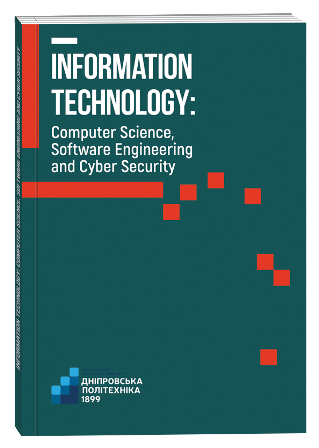SOFTWARE PROTECTION THE ROLE OF ARTIFICIAL INTELLIGENCE IN THE AGE OF CYBER THREATS
DOI:
https://doi.org/10.32782/IT/2025-1-2Keywords:
adaptive systems, artificial intelligence, cyber threats, cybersecurity, protection, software.Abstract
Objective. To study the role of artificial intelligence in cybersecurity, in particular, its impact on software protection in the face of growing cyber threats. Attention is paid to the human factor, which is one of the main causes of cyber incidents, and the ethical, legal and technical aspects of integrating artificial intelligence into cybersecurity systems are considered. Methodology. The study is based on a systematic approach that involves the analysis of scientific research conducted by domestic and international researchers in the field of cybersecurity and artificial intelligence. Comparative analysis methods were used to assess the effectiveness of various technologies, such as machine learning, neural networks, and natural language processing. Statistics and forecasts on information security costs were taken from international sources such as Statista. Scientific novelty. It consists in a comprehensive analysis of the role of artificial intelligence in software security in the context of modern cyber threats. Determining the potential of artificial intelligence to compensate for the human factor that can cause cyber incidents. The author emphasizes the need to develop new strategies that combine technical, legal and educational measures for the effective use of artificial intelligence in the field of cybersecurity. The key challenges are identified, including the vulnerability of artificial intelligence to attacks, ethical dilemmas, and the need to ensure transparency in decision-making processes. Conclusions. Artificial intelligence is a powerful tool for improving cybersecurity efficiency, as it can automate the process of detecting, analyzing, and responding to threats. The use of machine learning, neural networks, and natural language processing algorithms can significantly improve software security; by automating routine tasks and analyzing large amounts of data, artificial intelligence can compensate for the human factor, which is one of the main causes of cyber incidents. The effectiveness of artificial intelligence depends on the quality of data, algorithms, and integration with existing systems. For further improvement, it is necessary to develop adaptive systems that can continuously learn and update. The use of artificial intelligence in cybersecurity requires a comprehensive approach that takes into account technical, legal, and ethical aspects. Thus, it is necessary to ensure transparency of decisionmaking processes, protect data privacy, and prevent misuse of technology. Areas where further research is expected include the development of new strategies and technologies to counter modern cyber threats and the integration of AI with innovative infrastructures such as the Internet of Things (IoT) and Big Data.
References
Кісь А. А. Безпека комп’ютерних систем при використанні технологій штучного інтелекту. Scientific Collection “InterConf”. 2023. № 162. С. 246–248. URL: https://archive.interconf.center/index.php/conferenceproceeding/article/view/4066
Корпоративна кібербезпека: Роль ШІ у захисті даних. BDO Copyright. 2025. URL: https://www.bdo.ua/uk-ua/insights-2/information-materials/2024/corporate-cybersecurity-ai-role-in-data-protection
Лунгол О. М. Огляд методів та стратегій кібербезпеки засобами штучного інтелекту. Науковий журнал. 2024. № 1(25). С. 379–389. DOI: https://doi.org/10.28925/2663-4023.2024.25.379389
Про рішення Ради національної безпеки і оборони України від 14 травня 2021 року «Про Стратегію кібербезпеки України» : Указ Президента України; Стратегія від 26.08.2021 № 447/2021. База даних «Законодавство України». Верховна Рада України. 2025. URL: https://zakon.rada.gov.ua/go/447/2021
Савченко В. А., Шаповаленко О. Д. Основні напрями застосування технологій штучного інтелекту у кібербезпеці. Сучасний захист інформації. 2020. № 4(44). С. 6–11. DOI: https://doi.org/10.31673/2409-7292.2020.040611
Ящик О. Б., Симонов В. В., Іваненко Р. О. Забезпечення кібербезпеки в еру штучного інтелекту: аналіз технологічних підходів та стратегій для захисту інформації. БізнесІнформ. 2024. № 1. С. 81–86. DOI: https://doi.org/10.32983/2222-4459-2024-1-81-86
Information security and risk management spending worldwide in 2024 and 2028. Statista. 2025. URL:
Security software – statistics & Facts. Statista. 2025. URL: https://www.statista.com/topics/2208/securitysoftware/#topicOverview







